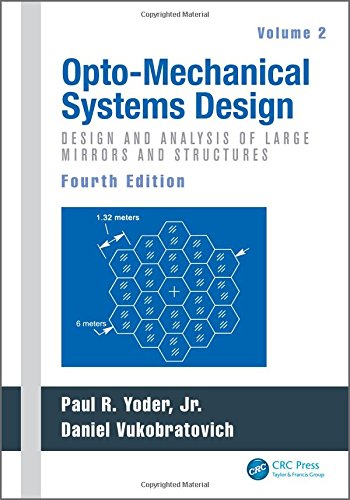

Most ebook files are in PDF format, so you can easily read them using various software such as Foxit Reader or directly on the Google Chrome browser.
Some ebook files are released by publishers in other formats such as .awz, .mobi, .epub, .fb2, etc. You may need to install specific software to read these formats on mobile/PC, such as Calibre.
Please read the tutorial at this link. https://ebooknice.com/page/post?id=faq
We offer FREE conversion to the popular formats you request; however, this may take some time. Therefore, right after payment, please email us, and we will try to provide the service as quickly as possible.
For some exceptional file formats or broken links (if any), please refrain from opening any disputes. Instead, email us first, and we will try to assist within a maximum of 6 hours.
EbookNice Team

Status:
Available4.5
8 reviewsOpto-Mechanical Systems Design, Fourth Edition is different in many ways from its three earlier editions: coauthor Daniel Vukobratovich has brought his broad expertise in materials, opto-mechanical design, analysis of optical instruments, large mirrors, and structures to bear throughout the book; Jan Nijenhuis has contributed a comprehensive new chapter on kinematics and applications of flexures; and several other experts in special aspects of opto-mechanics have contributed portions of other chapters. An expanded feature—a total of 110 worked-out design examples—has been added to several chapters to show how the theory, equations, and analytical methods can be applied by the reader. Finally, the extended text, new illustrations, new tables of data, and new references have warranted publication of this work in the form of two separate but closely entwined volumes.
This second volume, Design and Analysis of Large Mirrors and Structures, concentrates on the design and mounting of significantly larger optics and their structures, including a new and important topic: detailed consideration of factors affecting large mirror performance. The book details how to design and fabricate very large single-substrate, segmented, and lightweight mirrors; describes mountings for large mirrors with their optical axes in vertical, horizontal, and variable orientations; indicates how metal and composite mirrors differ from ones made of glass; explains key design aspects of optical instrument structural design; and takes a look at an emerging technology—the evolution and applications of silicon and silicon carbide in mirrors and other types of components for optical applications.